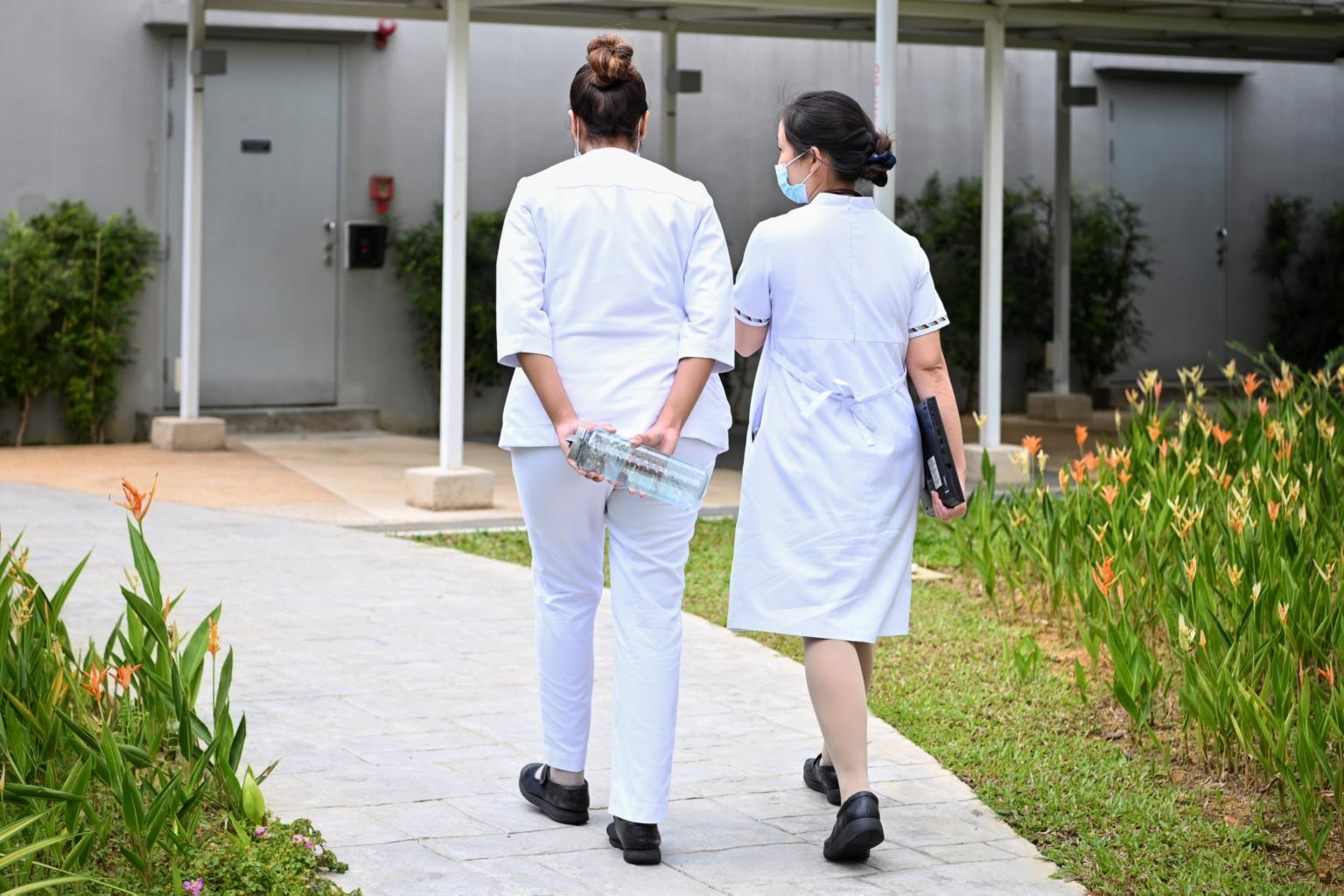Resignation rates of nurses in public hospitals at a five-year high in 2021
Sign up now: Get ST's newsletters delivered to your inbox

This was up from 6 per cent, 6.3 per cent, 7 per cent and 5.4 per cent from 2017 to 2020.
PHOTO: ST FILE
Timothy Goh
Follow topic:
SINGAPORE - The proportion of nurses in public hospitals who resigned reached a five-year high last year, with 7.4 per cent of local nurses leaving their jobs.
The increase was greater for foreign nurses in the public sector, 14.8 per cent of whom left their jobs last year.
Senior Parliamentary Secretary for Health Rahayu Mahzam disclosed these figures in Parliament yesterday, in response to questions from Mr Louis Ng (Nee Soon GRC) on nurse welfare, workload, salary and resignation rates.
The attrition rate for local nurses in the public sector was 6 per cent, 6.3 per cent, 7 per cent and 5.4 per cent in each of the years from 2017 to 2020.
For foreign nurses, it was 8.2 per cent, 9.1 per cent, 9.4 per cent and 7 per cent in each of the years from 2017 to 2020.
Addressing this, Ms Rahayu said: "We're losing foreign nurses... now that the borders are open, (they) can go back. They are also being attracted by the prospects overseas."
Noting that this means there are fewer foreign nurses in Singapore, Ms Rahayu said: "So while salaries and working conditions are important, and we're constantly looking at how we can improve these, we should not jump to the conclusion that they're always the root of the manpower problems."
Despite the attrition rates, the typical nurse-to-bed ratio in public acute hospitals - one nurse for every four or five beds in the general ward, and one or two nurses per intensive care unit patient depending on case complexity - has not changed significantly over the last five years, said Ms Rahayu.
In response to Mr Ng's questions on nurse salaries, Ms Rahayu said she was "reluctant to provide this so openly" as the public and private sector hospitals compete for manpower, and she did not have data on private sector nurse salaries.
But she did provide the salaries of staff nurses and senior staff nurses, who she said form the largest proportion of Singapore's nursing workforce.
The median annual salaries for staff nurses ranged from $42,800 to $53,700 in 2017 and rose to $46,300 to $58,500 in 2021, while the median annual salaries for senior staff nurses ranged from $65,000 to $79,700 in 2017 and increased to $71,200 to $87,600 in 2021.
Ms Rahayu said it takes a fresh graduate about four to six years to become a senior staff nurse, and so a staff nurse in 2017 may be drawing an annual salary in the senior staff nurse's range by 2021.
"The key issue is to retain the services of nurses," she said, adding that there are several parts to the Government's plan to stabilise the nursing workforce.
First, reviewing nurses' scope of work. In order to reduce the administrative workload of nurses and let them focus on patient care, public healthcare institutions are streamlining care processes and deploying dedicated administrative and support care staff to assist nurses.
Innovations in technology have also been introduced to ease the load of non-clinical tasks. She cited the example of the Nursing Software Suite, introduced by SingHealth in its hospitals to enable patients to check their test results, schedule tests, and indicate their requests to their care team.
Second, Ms Rahayu said it is important to ensure remunerations are competitive both locally and internationally.
"We understand the importance of recognising nurses' contributions and the (Health Ministry) has worked on reviewing their salaries and allowances," she said, noting that over the last five years, the annual salaries of local nurses in public healthcare institutions have increased.
Third, in order to deal with growing demands on healthcare manpower due to an ageing population, Ms Rahayu called on families and caregivers to be partners in the care journey of their loved ones, working together with the healthcare system to reduce the workload of healthcare staff.
Ms Rahayu said that MOH is working to ensure there are sufficient nurses on the ground, and that the registered stock of nurses over the past few years has remained stable, with a slight increase from around 42,800 at the end of 2019, to 43,000 at the end of 2021.
Local nursing intakes have also increased from around 1,500 in 2014 to around 2,100 in 2021 to ensure that there is a stable inflow of nursing manpower into the healthcare system, she said.
"MOH remains committed to provide support to the public healthcare clusters in our efforts to ensure that there is sufficient manpower on the ground, and look after the well-being of our nurses as they continue to face pressures from Covid-19 surge waves and an ageing population," said Ms Rahayu, adding that the ministry is looking at the issue holistically and adopting a multi-pronged approach to improve the situation.

